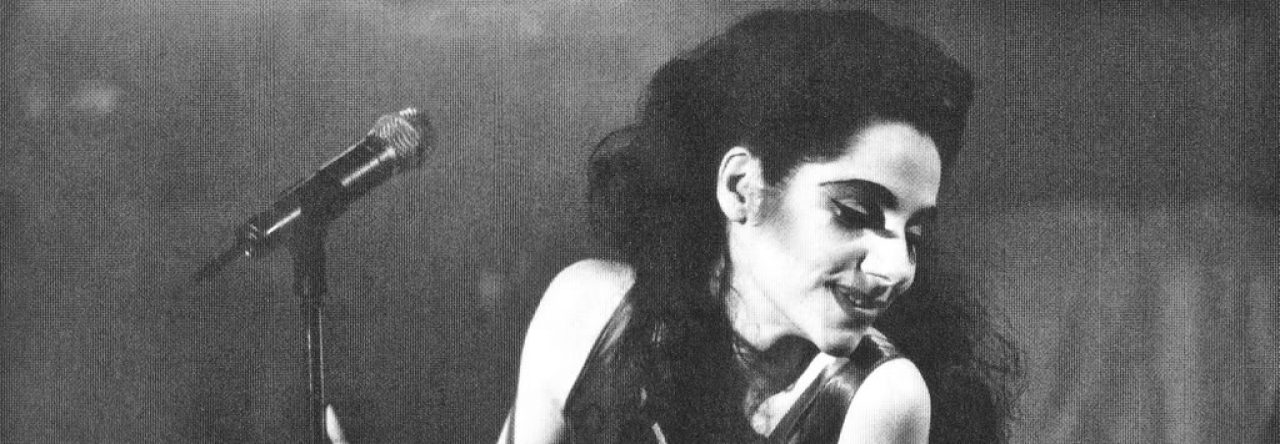Harvey’s first mainstream alternative music hit, played often on college radio and MTV, “Down By the Water” is one of her most dark and disturbing songs. It details the story of a mother who has drowned her daughter and after, feels guilt for what she has done. The instrumentation on this song does an excellent job of portraying the severity of violence on this track, by inducing anxiety within the reader through a string section. There is filtered undertone of bass that is so loud on the track that is takes over as the backbeat of the song. The strings increase in frequency after each chorus, as there is feedback of a guitar added on top of the strings to replicate a fluttering heartbeat. The song ends with just the repeated string section increasing in tempo, with whispered vocals layered on top as the anxious feeling heightens to a stop. Her vocals themselves use call and response to reiterate each of her lyrics in the verse. The final lyrics in the song are repeated and whispered, “Little fish, big fish/ Swimming in the water/ Come back here, man/ Gimme my daughter” (Harvey). This first portion of these lyrics are repeated from “Salty Dog Blues” by Leadbelly which again shows the ways in which Harvey incorporates blues elements into her music. The important thing to note is her reference of asking the ‘man’ to give her back her daughter. This can suggest that the child was unwanted, and the product of premarital sex as the narrator references herself as “blue eyed whore.” The narrative seems to not give a clear answer of why this mother is drowning her own daughter as she claims in the verse how she “lost her heart” after she drowned her, because she meant “so much to me” (Harvey). There is an ambiguity also present about who is being drowned, as there is a consistent changing of the pronouns, she says “I took her hand/ Just like my daughter” (Harvey). The problem with this is that it is unclear who she is referencing, and if it is an allusion to the narrator actually drowning herself because of her guilt. From his book Microgroove, John Corbett explains this ambiguity of the narrator, “Instead [PJ Harvey] reveals [myths of feminine vocality] as constructions, productions, and myths by treating the female voice – her female voice – as a flexible icon of multiple femininities and polymorphous gender identities” (181). This is a perfect example of such a case, as there is no clear answer for the reasons why the narrator is drowning her daughter and if she is in fact about to drown herself. Harvey takes on a multiplicity of personas, as both the murderous mother, and one that feels complete remorse and guilt for her actions.
There is also again religious imagery in the presence of water in the music video, and lyrics. According to an article on the importance of water in the Bible, “Water imagery permeates the Gospel of John, beginning with John the Baptist differentiating his baptism from Jesus’ forthcoming gift of the Holy Spirit (1:19–35) and peaking with the flow of blood and water from Jesus’ side at his crucifixion (19:34)” (Brown). Water is a constant source of healing in the Bible, and acts as a way for Jesus to transfer his Father’s power to the human world. Water is a source or rebirth, and a place for forgiveness, therefore it is interesting that Harvey is using this water as a way to commit a grave sin. Water also has to do with motherhood, as during birth, one knows when a child is about to be born when the amniotic sac breaks. This event is referred to as one’s “water breaking.” Whether this is in reference to her drowning her own innocence or her daughter, the imagery of the water in both the song, and music video allows one to connect this song to a concept of rebirth.
Down By the Water Music Video (1995)
The music video for “Down By the Water” depicts PJ Harvey in a bright red dress, with matching lipstick, and presents her as sexual figure. However the music video also shows images of Harvey swimming in the same outfit which offers a metaphorical meaning, as the song is about drowning. The entirety of the music video only depicts Harvey drowning so there is a allusion that the song may in fact be about Harvey drowning a version of herself as a child. A child often represents innocence and in reference to “blue eyed whore” and her visual persona as a sexual being in a slimming red dress, and grandiose makeup, she could have been alluding to herself drowning the innocence that she possessed. The musicologist Abigail Gardner, “attempts to read Harvey as a diva, […] and states that the musician performs a ‘deathly diva’. Linked to [the] monstrous feminine (1993), this diva chooses creation and sexuality over her maternal reproductive function, and performs death in different ways” (Gruet-Pelchat 89). Her diva appearance can be attributed a Joan Crawford inspired look, which may reference Crawford’s role as a horrible mother in the film, Mommy Dearest. Harvey herself has said in an interview that “Down By the Water” was, “a song I didn’t want to put a label on too much, like this isn’t a song about some woman drowning her baby. To be quite honest, I don’t really know what it is for me, myself, yet – which I don’t mind because I’d much rather leave it for other people to do what they want with anyway” (Blanford 2). There is a common understanding among male and female critics however that a mother drowning a child is indeed what this song is about. The disconnect between artist and audience, and the understanding that even she herself cannot explain what her music is truly about, is what makes PJ Harvey such a fascinating, introspective female artist.


